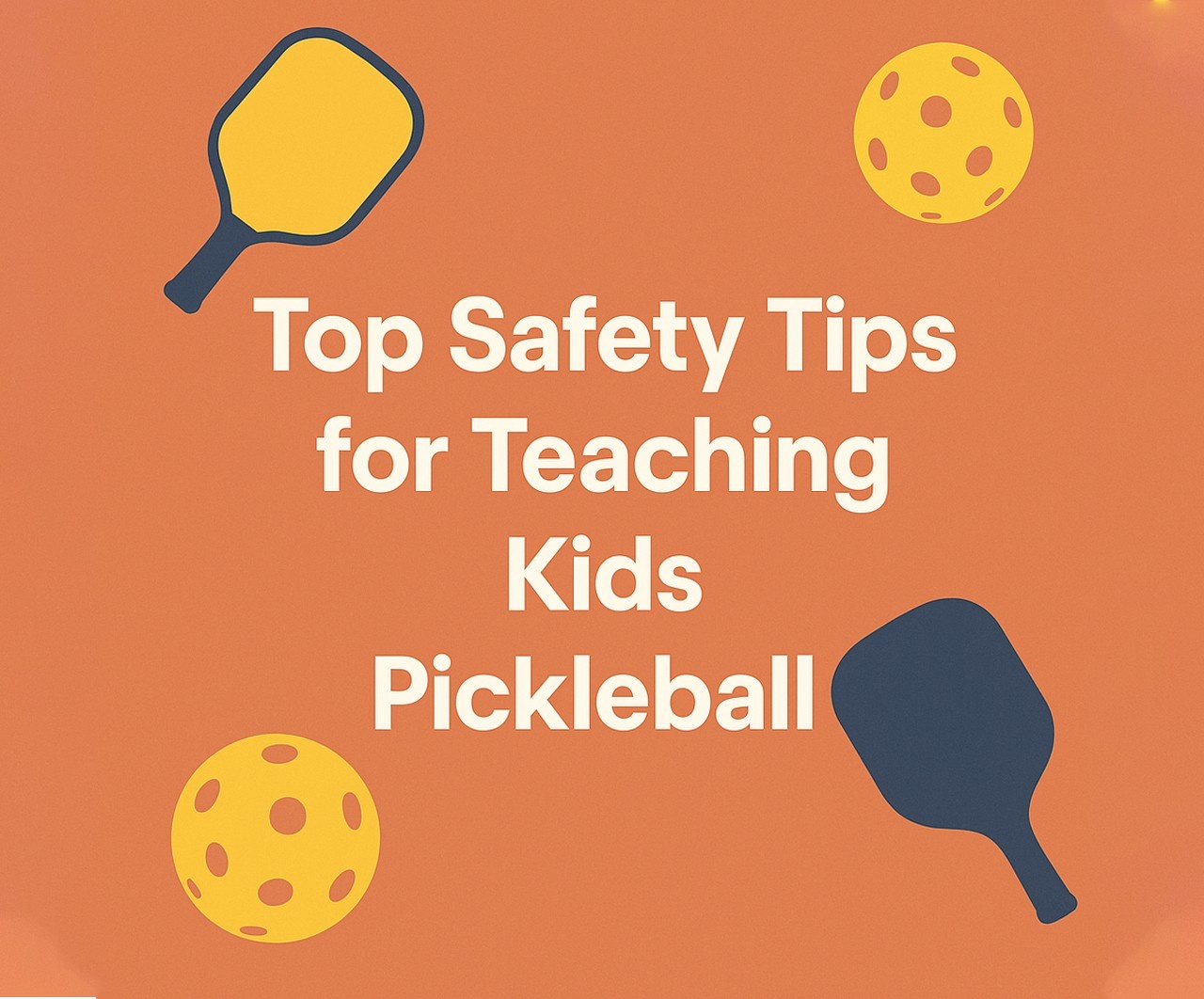Teaching kids pickleball is a fun and engaging way to introduce them to an exciting sport that promotes teamwork, coordination, and physical activity. However, ensuring safety while playing is just as important as teaching proper techniques. Parents, coaches, and instructors can take extra precautions to make the learning process enjoyable and injury-free. Whether selecting the right equipment, maintaining proper court etiquette, or reinforcing the rules, these steps help create a secure playing environment.
Many trainers recommend using kids pickleball paddles for better control, lightweight pickleball shoes to prevent slips, and soft pickleball balls to reduce impact injuries. In this guide, we’ll explore the top safety tips for teaching kids pickleball to ensure a safe and fun experience on the court. Know more..
Why Safety Matters in Kids’ Pickleball Training
While pickleball is generally a low-impact sport, kids are still at risk of falls, improper movements, and overexertion. Ensuring safety in youth training builds confidence and encourages kids to develop good playing habits from the start.
Benefits of Safe Pickleball Training for Kids:
- Prevents common injuries like sprains and muscle strains.
- Encourages better technique from an early stage.
- Boosts confidence by creating a secure learning environment.
- Improves court awareness and sportsmanship.
- Reduces fear of injury, making kids more enthusiastic about the sport.
1. Use Age-Appropriate Equipment
Using the right gear is essential for safety and performance. Kids need smaller, lighter equipment that suits their abilities and helps them develop better control.
Essential Gear for Kids:
- Junior Pickleball Paddles – Lighter and smaller, making them easier to handle.
- Soft Pickleball Balls – Made with foam or reduced bounce for safer play.
- Lightweight Pickleball Shoes – Provide better grip and ankle support to prevent slips.
- Protective Eyewear – Reduces the risk of eye injuries from fast-moving balls.
Why It Works:
A junior pickleball paddle ensures that kids can control their shots without straining their wrists. Using soft pickleball balls minimizes impact injuries, making rallies safer and more enjoyable.
2. Ensure Proper Warm-Up and Stretching
Warming up before playing helps prevent muscle injuries and improves flexibility. Teaching kids proper warm-up routines builds good habits that can benefit them in any sport.
Suggested Warm-Up Routine:
- Jogging or light running for 5 minutes.
- Arm circles and wrist stretches to prepare for paddle movement.
- Leg stretches to improve agility and movement on the court.
- Mini-rallies with soft pickleball balls to get used to controlled shots.
Why It Works:
A well-planned warm-up routine reduces muscle stiffness and helps kids adjust their movement before engaging in full play.
3. Teach Court Awareness and Spatial Safety
Many injuries in youth pickleball happen due to collisions or misjudging ball placement. Teaching kids about personal space and court awareness can prevent these accidents.
Court Awareness Tips:
- Stay within assigned court zones to avoid running into teammates.
- Call out “Mine!” or “Yours!” when hitting the ball to prevent collisions.
- Watch the net and boundary lines to avoid accidental trips or falls.
- Be mindful of overhead shots that could accidentally hit another player.
4. Reinforce Proper Pickleball Techniques
Using the right form reduces the risk of injuries caused by improper swings or awkward movements.
Key Techniques for Injury Prevention:
- Grip the paddle correctly to avoid wrist strain.
- Bend knees instead of leaning forward to maintain balance.
- Follow through on shots instead of jerky movements.
- Use a lightweight pickleball shoe with good traction to prevent slipping.
5. Supervise and Set Game Rules
Kids need clear guidelines and adult supervision to maintain a safe playing environment. Coaches and parents should set boundaries and monitor gameplay.
Important Safety Rules:
- No rough play or pushing on the court.
- Always listen to the instructor’s directions.
- Stop play immediately if someone gets injured.
- Hold the paddle properly when not in use to prevent accidental swings.
Why It Works:
Supervision ensures kids follow rules, reducing unnecessary risks and fostering good sportsmanship.
6. Hydration and Sun Protection
Kids often get caught up in the excitement of the game and forget to hydrate or protect themselves from the sun, especially during outdoor play.
Hydration Tips:
- Encourage water breaks every 15-20 minutes.
- Use electrolyte drinks in hot weather.
Sun Safety Tips:
- Apply sunscreen before playing outdoors.
- Wear a hat or visor to protect the face.
- Choose breathable clothing to stay cool.
7. Promote Positive Reinforcement and Fun
Making safety a positive part of learning encourages kids to follow the rules without feeling restricted. Coaches and parents should focus on encouragement and improvement.
How to Keep Kids Motivated:
- Praise good safety habits.
- Turn drills into games to make learning fun.
- Recognize effort, not just skill level.
Conclusion
Teaching kids pickleball is an exciting and rewarding experience, but safety should always be a top priority. By using junior pickleball paddles, lightweight pickleball shoes, and soft pickleball balls, children can play confidently while reducing the risk of injury. Ensuring proper warm-ups, reinforcing good techniques, and maintaining supervision will create a fun and secure learning environment. When safety is integrated into training, kids develop lifelong skills and a love for the game that will keep them playing for years to come.

